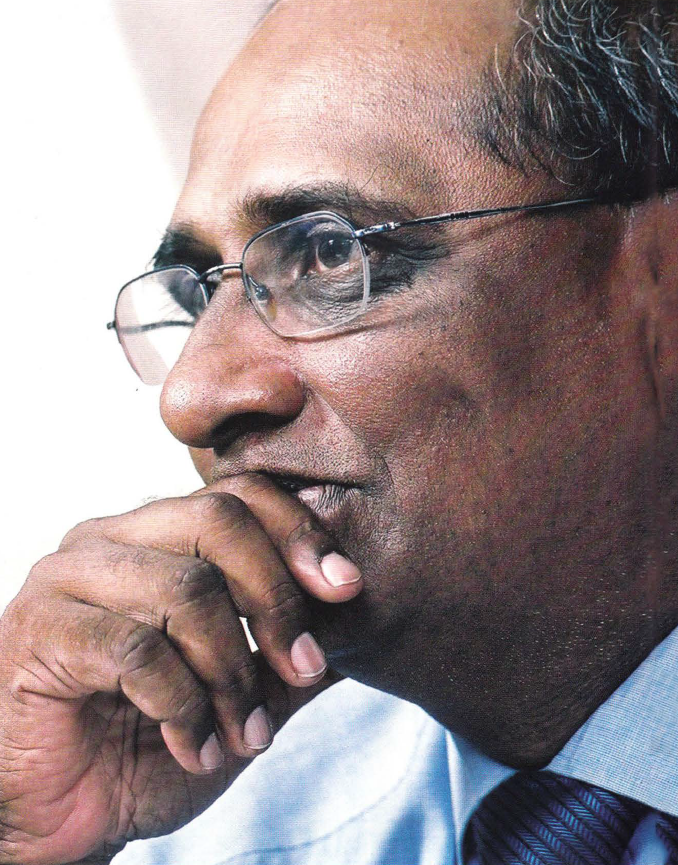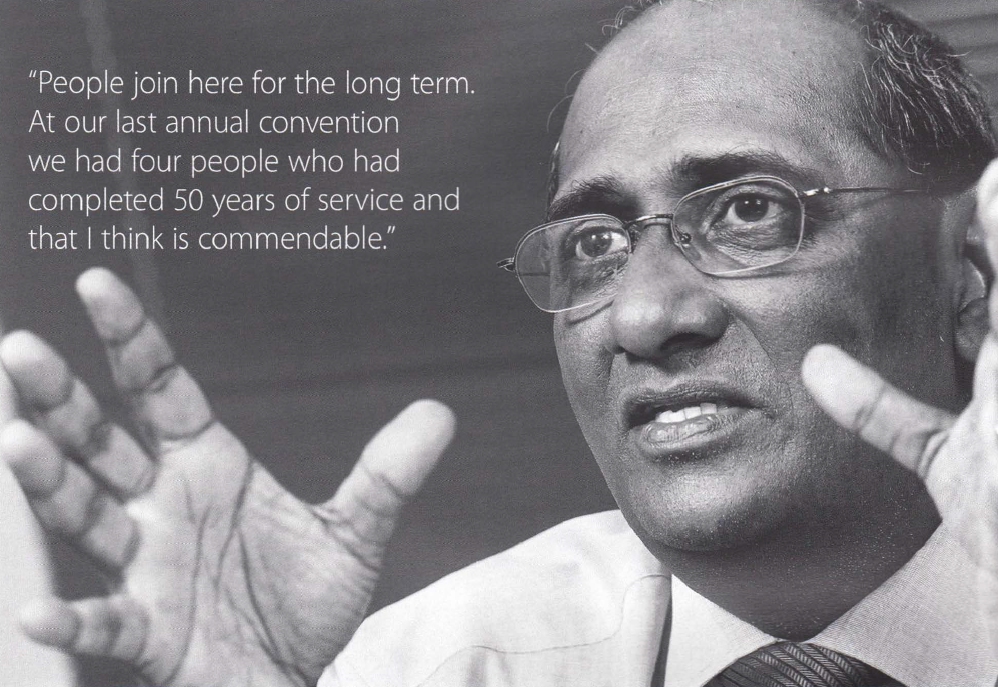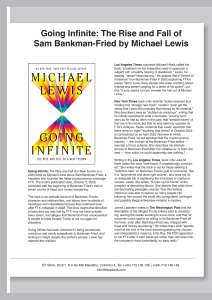The Maharaja Organisation is a name synonymous with reinventing the wheel with the local media industry. But little is known of the fact that it is one of the largest groups in the private sector with multifaceted and multi dimensional businesses with activities that span manufacturing, marketing, communications and media among others. Business Today speaks to Mano Wickramanayake, Group Director, Electronic Media Business of The Maharaja Organisation Ltd, on the growth of the organisation and how it plans to broaden its horizons.
By Keith Bernard. Assisted by Anisha Niyas

When did the Maharaja Organisation start operations in Sri Lanka? What were the key products or businesses at that time?
The origins of the Maharaja Organisation can be traced back to 1938 when what was probably Sri Lanka’s first recorded management buyout took place. The American trading house Dodge & Seymour was bought out by two of its employees – Subramaniam Mahadevan and Sinnathamby Rajendran who were friends. They converted that business into the Maharaja Organisation. At that time it was merely a business with indenting lines. Their first foray into manufacturing was in writing ink. They got the rights to manufacture Parker Quink and thereafter went on to manufacture cosmetics with Ponds. They also pioneered the manufacture and sale of PVC pipes in Sri Lanka. That phase of the Maharaja Organisation went on until i965 when the last of the two founders passed away and the next generation took over. Mr Mahadevan died without leaving any children. Mr Rajendran had several daughters and two sons – who eventually took over the business. They were Rajendran Maharaja and Rajendran Raja Mahendran. They amalgamated the existing companies with AF Jones – a British tea exporting company, which they bought. This amalgamation created the Maharaja Organisation Limited on April 1st, 1967. Since that time we have added many items with the expansion of our manufacturing lines. Until the early 90s we were in many industries – plastics, cosmetics, packaging, and also rubber products which we got out of after the company was burned in the 1983 riots. We had at the time also diversified into service operations but not in a very strategic manner. In the early 90s, the then government was encouraging investment in the stock market and encouraging large companies like ours to go public. We looked at the possibilities and we decided that the company would dilute family holdings in a different way. We went after multi-national companies that could give us technology, management skills, brands, as well as equity. So we started a number of joint ventures – an example being with Singapore Telecom in the data transmission business and also in media – television and radio. We started Dialog GSM with Malaysia Telecom and it was the first GSM operation in the whole of south Asia. We started a joint venture with Pepsi Cola in 1993 and entered the carbonated soft drinks industry.
At that time the Free Trade Agreement (FT A) with India was beginning to take some shape and form and we looked at the business opportunities the FT A offered. If you look at the profile of the group now, you will see that the concentration of the group is in products that do not travel well and have to be manufactured in market. In the packaging industry we have increased in sophistication – we do a lot of value addition and extrude our own film and do all types of laminations. For instance for the food industry we are doing very specialised packaging. We have developed our plastics business into many areas and now manufacture a plethora of products ranging from pipes to large water tanks and household containers and microwave friendly products. These are some of the areas that we have been concentrating on in the manufacturing sector. We are focusing less on consumer goods although we have a thriving consumer business. The strategy has been to put our investments behind communications and media. These are areas of the future. If the economy of Sri Lanka develops, within the framework of a reasonable economy those sectors will grow. That is why we are developing expertise. It is a learning curve for us and it is also the direction in which the group is heading. We don’t want to reinvent the wheel. We get help from who ever is willing to partner with us. It is a case of structuring partnerships. We have gone into IT education -National Institute of Information Technology (NIIT) of India is one of the biggest IT education institutes in the world. Those are the kinds of partnerships that we are looking at – where we bring local knowledge to the table and our partners bring in the brand name, which is backed up by expertise or markets.
“Our philosophy is that the Maharaja Organisation is a Sri Lankan company working in a Sri Lankan environment, so there is room for everybody.”
Is your portfolio based on a thought out diversification strategy or has it been that the strategy evolved?
Over the years, a lot of our growth has been organic. That has been the case in many Sri Lankan companies – particularly in the post 77 era of the liberalisation of the economy where we went from a socialist economy to a free market economy overnight. That growth was purely opportunistic and organic – wherever there was an opportunity we invested and got the required growth, as was the case of many companies at that time. Now it is more structured and strategic, purely for the reason that the market is more competitive. Now you have to be a lot more careful about where you invest and decide between investments. We have to be more focused because of market sophistication and competitiveness. This compels us to think strategically and plan for the long term.
Many business management pundits advocate that to be the best and to be a leader in an industry, you need to have a clear focus on your chosen industry or strength. As an organisation you have diversified as a conglomerate and done well and hold your strength in most of the business sectors that you have ventured into. How do you do that?
It is a blend of innovation on the one hand and conservatism on the other. We have three or four pillars of the group, which are solid and mature industries. They support the group on a long-term basis; they rarely fluctuate and grow steadily. They are easy to plan in terms of growth and investment for manufacturing, recruitment and so on. The edge we have got has been the ethos of the company and the spirit of enterprise that we actively encourage among our employees. When you join the Maharaja Organisation as a young executive you have the chance to make it to the top faster than in most other groups in Sri Lanka. This is what I personally believe.
What I am particularly gratified to see now is what used to be the province of the English speaking elite – people from big schools who speak and think in English – ,is now being eroded by bright young people from vernacular educational backgrounds. If you look at our media organisation the talent there is very obvious. We have young people who are coming out of the school and university system and taking to these new technologies that are coming out of the media like ducks to water. They are efficient, focused and are hungry to do well. In terms of human resources in Sri Lanka we complain about the education system not being geared to deal with a globalised world. Yet with all those drawbacks and lack of knowledge of English the enthusiasm and energy of our young people is what we, as businessmen, should capitalise on.
Within the group now there is a concerted effort to lower the age of middle and senior management. That gives us the energy and the drive to do great things.
As a group, how are the different business hubs structured? How do you ensure that the different hubs synergise and relate to the overall business goals?
There doesn’t have to be synergy between business hubs. If there is – and in some cases there are – then that is good. We are trying to grow those hubs as small groups within themselves. There are seven or eight companies now in the media hub -in production, outdoor events and broadcasting, and we expect those to grow separately. There are some synergies but we are not looking for synergies between the hubs.
“We have to be more focused because of market sophistication and competitiveness. This compels us to think strategically and plan for the long term.”
But how do you make sure that these connect well to the top or apex objectives?
The overall objective of the group is to grow and lead. Those goals are translated in many ways depending on the company. All companies are not market leaders. What we try to do is make sure that all of our companies are leaders in a particular aspect – be it innovation, business practices and so on. That is the common thread that runs through the group. Your question assumes that there is one corporate objective that binds everything. There are corporative objectives that are common but there are no quantitative or qualitative corporate objectives that bind the whole group. That is not how the group is structured.
The Maharaja Organisation has grown over the years through a combination of organic growth and selective investments as opposed to aggressive mergers or hostile takeovers. Is that a fair observation and if so what is the explanation?
That is a very fair observation. Our owners are very particular about not being involved in hostile takeovers. Our philosophy is that the Maharaja Organisation is a Sri Lankan company working in a Sri Lankan environment, so there is room for everybody. We don’t want to be seen as rapacious predators trying to take over small companies. That is a clear philosophy known to every one in the group. We did buy companies in the 70s and we still do. We recently made a strategic purchase – a BOI approved Korean company that manufactures long life bulbs. We were buying these bulbs from India and this Korean company who used to export them to India manufactured them in Kadawatha. We would import them under our own brand and sell them to the local market. There was synergy with our businesses so it made sense to buy into that company. We do acquire companies but we don’t do it in a hostile manner. We are also quite willing to divest companies that don’t fit in strategically either.
Almost every success story in business has had the benefit of strong and visionary leadership. Where does the vision for your organisation flow from?
Clearly within the last 20 to 22 years the present chairman – Mr Raja Mahendran, has provided the vision and drive. His brother retired from the business a few years ago. So he is the sole owner involved in running the business. He is the icon that is emulated by aspiring executives in the lower rungs. It works very well because we have drive from the top and all these young executives try to emulate him.
As an organisation, how would you sustain that kind of vision and leadership?
That is the trick. The idea is to make people proud to belong to the Maharaja family. We are more than an employer; we are a company, and a way of life. We are a lifestyle that is acquired when you join us. And that lifestyle has different values. The value system is very challenging. It makes people enthusiastic about working and being successful.
Have you expanded overseas?
We have a few small investments overseas. We are obviously looking at India. We are creating some synergies overseas through a combination of our group with some of our overseas investors.
You mentioned the values and spirit within the Maharaja Group. Organisation behavioural specialists talk of the importance of company culture toward its success. What kind of culture do you promote within your group?
We promote a culture of success. In the early 70s we were a small company headquartered in Pettah and were successful in the tea business, which was the province of the old established, former British-owned companies. We were an upstart company and at that time the culture that was promoted within the company as well as the culture that we projected was of being ruthless and determined to win. And it worked for us then. The way we projected that was through sports – we were champions in cricket, rugby, basketball and netball. We got into the last pages of the newspapers on a daily basis. That was the strategy and it worked because it created an image. We found that more professionals and bright young people were willing to join the organisation. For example a lot of my friends in so called blue chips wondered why I joined an organisation based in Pettah. I was a qualified accountant and they were shocked that I was joining the Maharaja Organisation. At the time I joined I had an offer with the same salary from Harrison and Crosfield, a British-owned company. And many years later we bought Harrisons, so I would have ended up here anyway.
Through our leadership and success in sports we attracted a lot of good people. This really helped us grow the organisation and develop the business. That was really the beginning of our coming of age. We then grew into an organisation that you could never keep down. Whatever adversity we faced we would always come back stronger and what happened in 1983 proved that. We came back very fast and very strong. That was also a part of the maturing process. We were moulded in a crucible of fire. From that stage we have progressed as a company. We are willing to take risks – and put in large sums of money in businesses that we believe can pay back big time over the long term -media is a prime example. We got into media in 1993 when private media had just been permitted. We were the first licenced outlet after Teleshan Network Limited (TNL), which was taken over by the government. We didn’t know anything about the electronic media, and neither did our partners. It was a very difficult process for us -we lost a large amount of money. For the first ten years of existence we lost hundreds of millions of rupees. Fortunately for us radio did quite well from the beginning so we were able to sustain the organisation. We also got a lot of support from the group who put a lot of money behind it. Now we are able to run television profitably and have taken leadership in the industry.
Sirasa TV is a clear number one in ratings – we are at least five to six rating points ahead of Rupavahini. We have proved that we can take on a new industry, stay in there for the long term and really,-01ake it work and also develop it into something unique. We have been very innovative in services and we have wonderful creative people. We are very happy with the results in media. We have had a very good year. We have now gone into production. Some of the productions that we are doing locally are of very high quality. We are now planning co productions with foreign companies, which will also be marketed in different languages overseas. Geography is not going to limit our development in the media business. That is the direction that we are looking at now – from being the new kid on the block and then maturing into somebody that can never be put down and has the courage to come back. We are now a more mature organisation that is clearly here for the long term.
You speak of the importance of people in the organisation. You also spoke in particular about your media business in which young people straight out of school or university have excelled. For an organisation that is presumably so focused on people how do you develop their capacities and sharpen their skills?
Training is the key. We have continuous training programmes as well as a training manager now for the group. The Human Resources division has been handling a lot of training. Within the individual organisations itself we handle a lot of training as well. There is very little electronic media training in the country but we are members of many broadcasting associations – the Asian Broadcasting Union, the Asian Institute of Broadcasting Development, which is a UNESCO funded body – we are members of all these bodies and they provide specialised training programmes. Radio Deutschewelle has trained many of our managers in Germany, so that is the kind of experience we give. They gain a lot out of this -they work abroad, they go for training programmes and they get offered new opportunities. I have on my desk right now a letter from one our engineers who has been offered a scholarship in the US for two months by the board of directors of Voice of America (VOA). This is a technical course. We also train people at many levels. Last Saturday there was a general management-training programme here – we have our own auditorium in this building – for middle level managers in the media. Over 30 people attended this.
Many employers in Sri Lanka are reluctant to invest in training people because of the risk of losing them to the competition. How do you as a company overcome that problem?
If we as a company cannot make it worth their while for them to stay with us we would fail. In addition to training we have to provide a challenge and adequate remuneration – we provide both. That is why our staff turnover is so low. People join here for the long term. At our last annual convention we had four people who had completed 50 years of service and that I think is commendable.
How do you choose your future managers and leadership?
Actually people pick us. That is how it happens. We rarely advertise for people but we get a constant stream of unsolicited applications. The more innovative the application the better chances of us taking them in. We have taken people from all walks of life, people who just walk in with ideas. Within the system we promote people who show some initiative. We have an unofficial list of fast trackers, which the senior management has identified. These guys are given opportunities and they are rotated through the group. So they can be in manufacturing, distribution and media in a space of three to four years. They are exposed to different skills and situations.
The Maharaja Organisation had a hand in the development of mobile telephony in Sri Lanka, more specifically you were involved in the launch of Dialog. Later you divested your interest in this particular growth sector. Is this a permanent decision or a one off strategic move?
That was a strategic decision – we are not out of the communications sector. A lot of people ask why we divested Dialog. It was our licence and we started the business. What happened is that at the time Sri Lanka Telecom (SLT) came up for privatisation and we bid for it with Nippon Telegraph and Telephone (NTT) Group of Japan – we represented them initially, and as you know, they eventually got it. For various reasons, which I believe was largely political, we were purposely kept out of that bid. The methodology used was through the tender requirements itself. So in hindsight we made the cardinal error of taking the government of Sri Lanka to court. In this sort of environment, I don’t think that really worked. The government was the licencing body and our partner, NTT Japan, was placed in an awkward position. We let them go on their own. They eventually won the bid and we withdrew the legal action. We realised that it was a setback for us in the telecom business. We were already partners with Telecom Malaysia, which was a government organisation. They would also be disadvantaged and that was the time we decided to part from them. We are certainly not out of the communications business because of all the convergence that is taking place. We are now providing content to a lot of telcos in Sri Lanka. That business will grow further.
Will you be looking at going into content-based telecommunications in the future?
Of course, yes. We have made several successful attempts in the last five years to get into content delivery because we have the content. One of the problems in this country is that the way the industry is regulated is completely out of date and not in sync with technological developments or what is happening in the rest of the world. Also consecutive governments including the last United National Party government have been unwilling to give us the licences we require.
What are your plans for your media business and do those plans include expansion in international broadcasting?
We are already in overseas markets now. The whole convergence of technology with digitisation has really opened the world as a market for us. We are now in Australia on full screen web TV – you can get Sirasa live in Melbourne on television via the net via broadband. This is the kind of technological development that is necessary. We don’t need to send satellite signals anymore because this has made the process simpler and cost effective. There are so many things happening – you get digital radio, there are now phones with broadcast reception capability. These are new innovations. Both SL T and Dialog have announced that they are going into WiMAX -wireless broad band covering the whole country. With all these developments, we see ourselves in a very good position.
To what extent have you digitised your stations and networks?
As we speak, our entire television station is undergoing a new digitisation phase and within a few months we will be fully digital right up to the point of transmission. At the point of transmission we revert to analogue because our transmissions and all other terrestrial transmissions in Sri Lanka are analogue.You mentioned Australia. Have you expanded into other markets?
We have been on the net for years. Our television news is archived on the net and you can get it anywhere in the world – small image not full screen. Our radio stations have been on the net – in fact we do interactive shows with the diaspora all over the world. We have been on satellite in England unsuccessfully. These are attempts that we are taking on.
What about the Middle East where there is a captive audience who may not have access to computers?
We have two radio stations, which have been operating for a year – there is Katarata Sirasa and Ungal Shakthi – a Sinhala and Tamil service. The Sinhala service is on medium wave so it has a very broad reach across the Middle East. The Shakthi transmission is on FM so it is in the United Arab Emirates. Both operations are developing very nicely. It is a strong market.
What have you to say about media legislation and the regulatory frame work of Sri Lanka?
There is no legislation that governs the electronic media at all except the acts of incorporation for the Rupavahini Corporation. The licensing regime is not efficient – many have got licences from various different people. This whole confusion of licensing still exists and there is no broadcast authority either – neither self-governing nor through the State. Media is an unregulated and is a poorly legislated industry that doesn’t support growth. This is a very small market – the entire market is US$50 to 60m a year in total ad spend. Television stations are dependent solely on advertising revenue. There are now 12 television stations operating and 14 have licences – it is crazy. The UK is such a huge market and they have only four terrestrial free-to-air television channels. This is due to bad management of the spectrum. In Sri Lanka you have to point your antenna in various different directions to get a signal! We started private television channels in the 1990s and that was the time to introduce common broadcast points. Every country in the world has that but we don’t. So everyone put a tower where they can find land and as a result we have coverage issues. The whole industry becomes inefficient as a result.
But as an industry leader can’t you take up the position to lobby for necessary and acceptable legislation?
Well we have tried. And yes I have to admit that we have failed. That doesn’t mean that we will stop trying.
For a large and successful company, it is not easy to be low-key, yet the Maharaja Organisation has stayed outside the active business radar. Is this a deliberate stance on your part?
After 1983, it was a deliberate attempt to stay out of the limelight. Up to that point we were quite visible but after the violence of 83 and the destruction that we suffered, we spent the next three years rebuilding. After then we decided that it would serve us better if we stayed low key. Once you have gone through what we did then, you feel its better to maintain low profile, go about your business and develop what you are doing. I agree that there are negatives because people look at our organisation and they don’t really know what they are looking at. There was a time when people looked at us as a company that gets by on commissions. We have always been a manufacturing company and employ over 5000 people. We have industrial centres all around Colombo and the suburbs. Our factory complexes are very sophisticated and state of the art. The public does not know this and perhaps we made a mistake in not pushing that out into the open. All the Corporate Social Responsibility that public companies talk about, pale in comparison to what we do. For instance, we have been having English language classes – which everyone seems to be doing now – for over 25 years. No one knows this. We have been funding hundreds of students.
What we do was visible only during the tsunami time because that was a big effort on our part. There are a lot of projects going on as we speak. But we don’t publicise these. If there’s one thing that we don’t do, it is talk about ourselves especially through our media. That is a policy that we have. It has worked for us in some ways and in other ways it hasn’t. We are happy with where we are right now.
There is speculation that your company is planning on broad-basing its ownership and planning an Initial Public Offer {IPO). Would you like to comment?
There are a couple of misconceptions there. Firstly we are not broad basing the ownership – what we are doing is recognising the present ownership of the group and incorporating a very important part of that ownership in the name of our banner company. The Maharaja Organisation Limited is by no stretch of imagination the holding company. It is now called Capital Maharaja Limited. That is because the Capital Holdings Group of Companies is a substantial shareholder in Maharaja Group Companies. Capital Holdings Limited also has companies of their own – which in this merger will come in to the fold of the Capital Maharaja Group. So it is the consolidation of the group and the indication of the Group’s true structure. It will not be an IPO but I am not ruling that out in this country or our foreign markets either. You will agree that this is not the best time for an IPO in Sri Lanka.
Resulting from the restructure will there be any strategic changes in the form of your future direction, management structure etc?
There will be some kind of restructuring ta.king place – not at the board level but at an intermediate level. These won’t be significant – it might free certain companies and individuals within the group to pursue new ventures and initiatives. There won’t be any changes to the basic structure of the group.
Are you pleased with Sri Lanka’s private sector towards nation building, and how do you think you could contribute to this cause?
Sri Lanka’s private sector has a huge role to play in rebuilding this nation. I have been a little disappointed in the past governments – it is too early to judge the present government. From the early 1990s, they have not recognised the potential of the private sector. They pay lip service to it by saying that we are the engine of growth and so on. They have not really used the private sector as the engine of the growth. The private sector has the energy, skills and the people who can actually do something. That has not been harnessed. That is largely the fault of the politicians. The private sector has been quite willing to play a role. There are very senior managers in private and in quoted companies that are willing to spend significant amounts of their time on unpaid work towards rebuilding this nation, but are not given opportunities to do so. Politics have become so narrow and combative. From experiences in other countries the private sector has played a role in the betterment of society. You don’t have to look too far. Look at the way India used their industrial giants who help with policy making. Even Singapore and Malaysia have a similar process. Malaysia, which is a very structured regime, has optimised their private sector to rebuild the nation.
What do you think should be done?
Firstly we need a conducive environment so I pray that there will be peace in this country. I don’t think anyone wants war-even the ones who say they do don’t really mean it. What they want is a lasting solution and we have to work towards achieving that. If we can build that environment then this country has a great future. ®








